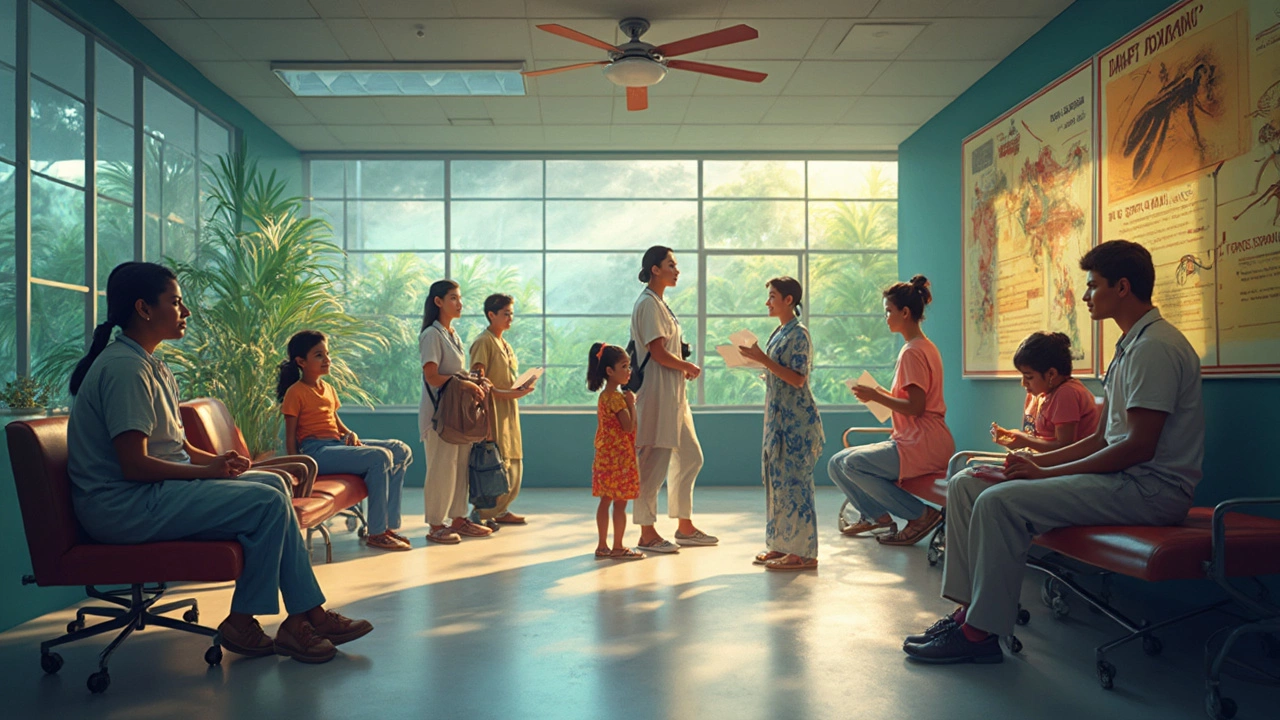Dengue Fever in Costa Rica: What You Need to Know
If you’re planning a trip to Costa Rica, you’ve probably heard about its rainforests, beaches, and wildlife. One thing that often gets left out of the brochure is dengue fever – a mosquito‑borne illness that shows up most often during the rainy season. Knowing the basics can save you from a miserable week of fever, aches, and doctor visits.
In Costa Rica, the main culprit is the Aedes aegypti mosquito. These bugs love to breed in standing water, even in a tiny flower pot. They bite during the day, especially early morning and late afternoon, so you’re not safe just because you stay inside at night.
Common Symptoms and When to Seek Help
Dengue usually hits 4‑7 days after a bite. The first signs are high fever, severe headache, and pain behind the eyes. You’ll also feel muscle and joint aches that people call “breakbone fever” for a reason. A rash may appear after a day or two, and some folks notice mild bleeding from the gums or nose.If any of these symptoms get worse – especially if you start feeling dizzy, notice a sudden drop in blood pressure, or see a lot of bruising – head to a clinic right away. Costa Rica’s public hospitals can manage dengue, but early treatment makes recovery smoother.
Practical Tips to Avoid Dengue While Traveling
The easiest way to stay safe is to keep mosquitoes away. Wear long sleeves and long pants when you’re out during peak biting times. Light-colored clothing works better because the mosquitoes are less attracted to it.
Use a good repellent that contains DEET, picaridin, or oil of lemon‑eucalyptus. Apply it to exposed skin and reapply every few hours, especially after swimming or sweating. Sleeping under a mosquito net isn’t usually needed indoors, but if your room doesn’t have screened windows, bring a net for extra peace of mind.
Check your accommodation for standing water. Empty any buckets, plant saucers, or bird baths each morning. Small pools of water are perfect breeding spots for Aedes mosquitoes.
When you’re on the road, keep your drink containers covered and avoid leaving open soda cans lying around. The sugars attract flies, which can indirectly bring more mosquitoes to your area.
If you do get bitten, don’t scratch the bite. Scratching can break the skin and increase the chance of secondary infection. Clean the area with mild soap and keep an ice pack handy to reduce swelling.
Travel insurance that covers medical evacuation is a smart move, especially if you plan to explore remote rainforest lodges where a hospital might be far away. Having a plan means you won’t waste time deciding what to do if you feel sick.
Bottom line: dengue is avoidable if you stay aware of mosquito activity and take a few simple steps each day. Follow the advice above, keep an eye on your health, and you’ll enjoy Costa Rica’s natural beauty without the unwanted side effects of a dengue infection.

Biggest Health Problem in Costa Rica: What You Need to Know Before Traveling
Planning medical tourism in Costa Rica? Many visitors don't realize that dengue fever is the biggest health problem you might face while there. This article breaks down why dengue is so common, how it can affect you, and what you should do to stay safe. You'll also get real tips on healthcare options, what the hospitals are like, and smart ways to avoid getting sick. Whether you're booking dental work or surgery, this guide helps you dodge surprises and take control of your health while traveling.

Top 3 Survivable Cancers: Understanding and Hope
Mar, 8 2025

7 Types of Mental Disorders You Should Know About
Mar, 17 2025


